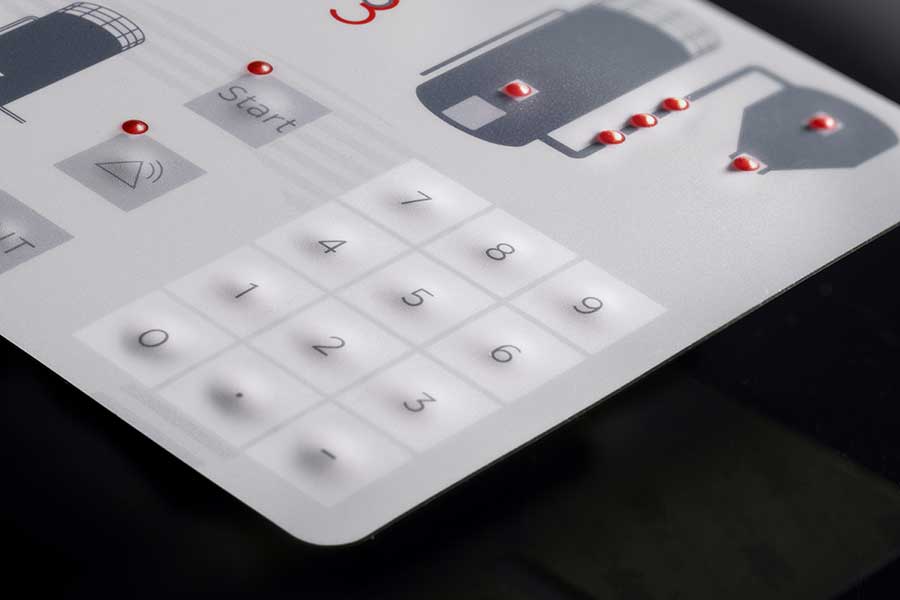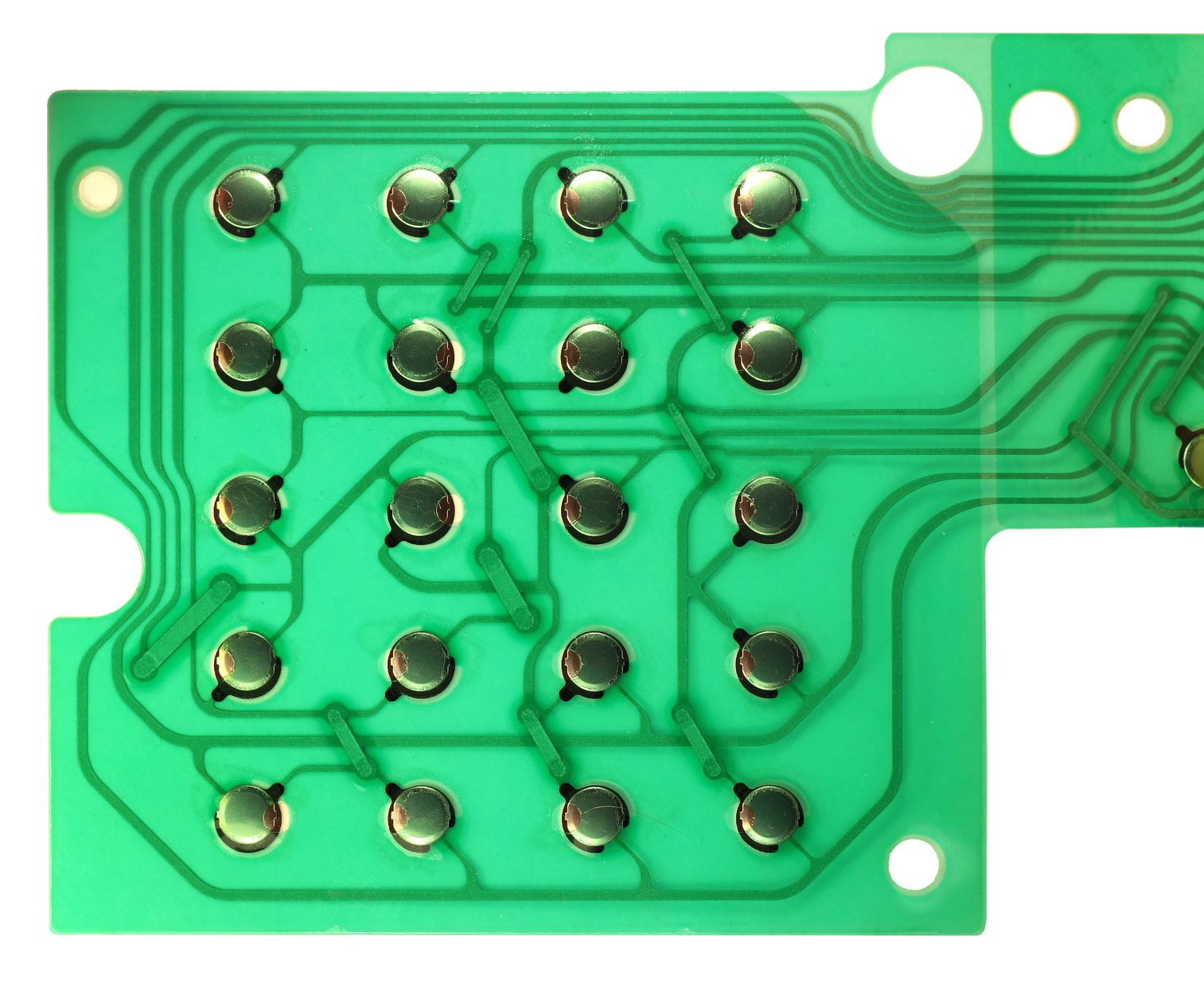Explore Various Types of Membrane Switch Technologies for Your Demands
Explore Various Types of Membrane Switch Technologies for Your Demands
Blog Article
Just How Membrane Switches Over Contribute to the Resilience of Electronic Control Panels
Membrane layer switches play a vital role in improving the toughness of electronic control panels, largely through their multi-layered building and construction which offers efficient defense versus ecological aspects such as moisture and dust. The lack of relocating parts significantly reduces the chance of mechanical failures, making membrane switches perfect for requiring applications.
Definition of Membrane Layer Switches

Membrane layer switches are developed to be thin and light-weight, making them appropriate for applications where room is limited. They can be manufactured in numerous forms, dimensions, and shades, providing versatility in layout that meets aesthetic and useful needs. Additionally, membrane switches can integrate numerous technologies, such as responsive feedback and LED indicators, boosting user experience.
As a result of their construction, membrane switches are usually immune to dust, wetness, and basic wear, adding to their resilience popular settings. Their seamless layout not just promotes easy cleaning yet additionally lessens the risk of mechanical failure, making them a preferred option for makers seeking reliable individual interfaces in their digital control panels.
Defense Against Environmental Factors
The style of membrane layer switches inherently offers a degree of security versus different environmental factors, which is important for keeping functionality in tough conditions - Membrane Switch. These buttons are normally built with layers of versatile products that protect inner components from dampness, dust, and pollutants. By enveloping the wiring, membrane switches over minimize the threat of brief circuits and rust, which can substantially harm efficiency
Furthermore, the use of durable adhesives and sealers throughout manufacturing boosts their resistance to environmental obstacles. Membrane buttons can withstand direct exposure to chemicals and solvents, making them suitable for industries such as food handling and healthcare, where health and sanitation are extremely important. Their seamless surface design additionally protects against the buildup of dust and microorganisms, helping with easier cleaning and maintenance.
Temperature fluctuations are another ecological worry, and membrane buttons are engineered to function properly across a large range of temperature levels (Membrane Switch). This adaptability makes sure that control panels remain functional in different setups, from commercial settings to consumer electronics
Effect On User Interaction
User communication with electronic control board is considerably influenced by the style and capability of membrane buttons. These buttons provide a responsive user interface that enhances the total individual experience, enabling for instinctive navigating and control. Their responsive nature makes sure that individuals receive immediate feedback upon activation, which is crucial for jobs requiring accuracy and effectiveness.
Furthermore, the smooth surface of membrane layer switches over assists in very easy cleansing and great site maintenance, advertising individual self-confidence in the dependability of the user interface. This tidiness is especially vital in settings where hygiene is critical, such as clinical or food handling settings. Additionally, the compact and light-weight design of membrane layer switches over adds to the visual appeal of control panels, urging individual involvement with a modern and streamlined look.
Moreover, the integration of aesthetic aspects, such as published icons and backlighting, helps users rapidly determine features, reducing the learning curve connected with new tools. Because of this, users can operate tools more effectively, leading to increased productivity and fulfillment. In summary, membrane layer switches play a pivotal function in improving customer communication by combining performance, appearances, and convenience of use, ultimately bring about enhanced functional performance.
Design Flexibility and Personalization
Layout versatility and personalization are necessary aspects of membrane buttons, making it possible for makers to tailor electronic check out here control board to particular applications and customer needs. This versatility enables the assimilation of different layout aspects, such as shades, graphics, and appearances, which can improve the visual allure and customer engagement of the control board.
Membrane switches can be tailored in shapes and size, suiting a large array of devices and applications, from industrial equipment to customer electronics. This flexibility guarantees that producers can develop instinctive user interfaces that straighten with individual assumptions and operational demands. In addition, the capacity to incorporate distinct functions such as backlighting or tactile comments better enhances use, enabling an extra interactive experience.
Furthermore, the manufacturing procedure for membrane switches over supports the fast prototyping of designs, allowing makers to iterate and refine their principles promptly. This capacity not only accelerates the growth timeline yet likewise guarantees that the end product meets certain useful and aesthetic criteria.

Cost-Effectiveness and Long Life
Cost-effectiveness and long life are considerable advantages of membrane layer buttons, making them an eye-catching choice for manufacturers and end-users alike. These switches are commonly less costly to generate than conventional linked here mechanical buttons, mostly due to their streamlined production processes and the reduced variety of elements needed. This cost benefit prolongs not only to preliminary production however additionally to lasting functional expenditures, as membrane layer buttons usually call for much less upkeep and have a lower failure price.
In addition, the durability of membrane layer switches adds to their total worth. Constructed from sturdy materials, they are immune to ecological aspects such as wetness, dust, and chemicals, which can bring about premature wear in other button types. The lack of moving components reduces mechanical failing, allowing membrane layer switches to maintain performance over extended periods.
This longevity is specifically beneficial in applications requiring consistent efficiency under requiring conditions, such as clinical gadgets and industrial tools. Ultimately, the combination of cost-effectiveness and durability makes membrane layer switches over a financially sensible selection for makers, offering trusted options that endure the examination of time while maximizing budgetary factors to consider.
Conclusion
In verdict, membrane buttons substantially improve the resilience of digital control board through their durable construction and safety attributes. By successfully securing circuitry from ecological risks and decreasing the danger of mechanical failure, these buttons ensure regular efficiency sought after applications. The smooth style advertises hygiene and simplicity of maintenance, while customization choices make it possible for customized solutions for different demands. Generally, membrane switches stand for a dependable and cost-efficient option for improving the longevity and performance of digital control systems.
Report this page